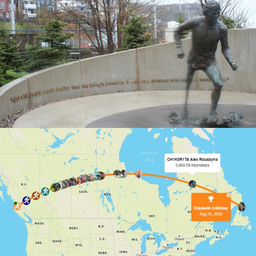
I’d noticed in the last three or four days of the ride I’d been dragging my feet. I still set my alarm every night, and clipped on my bright flashing red bike light in the early hours of dawn every morning. I still had plenty of energy, plenty of get up and go, and I still felt good while I was on those two wheels of mine. I still had lots left in the tank to carry on with my normal day after my ride. But something felt a bit off.
A bit of soul searching revealed the answer; I didn’t want the adventure to end. Turns out, I love the journey.
This surprised me a bit. After all, I’m the list girl. I get such satisfaction from completing a task and checking it off my list. My lists give structure to my days, and keep me moving forward. And yet, I was hesitant to put a check mark beside this particular item on my list. Usually when I need to unscramble my thoughts, and allow quieter ones to come to the fore, I go for a ride. But since I promised myself a couple of days off, I’ve spent the last few days doing some things I haven’t had time for while riding, and hoping my thoughts would organize themselves.
I’m not sure my mind has been able to process this as well as if I’d been biking or running, but I have managed some clarity. As best as I’ve been able to figure out, I think I love lists because they are my ‘doing’. They remind me of what I need to accomplish. These are the tangible things in my life. These are the things I can report on. When someone asks, what have you been up to, I can turn to my list to account for my time.
Things that never make my list are the parts of my life that are my ‘being’. I have never added to a list things like:
- Enjoy the afternoon with Benjamin
- Talk to Jim’s mom
- Visit with the kids at dinner
- Watch the sun rise
- Cycle through the mountains
- Connect with my sister in the evening
These things are part of my days. Perhaps they are on some kind of mental list, but they are not on the check-it-off-the-list, kind of list. These feel different. The bike riding felt like it could be on this non-list. These are the things I don’t want to end. Each one of them ends, of course, each time, but I don’t want the chance to have these moments to end. These are the rich, memory-making moments for me.
I was reading a book this week. In it a little girl, who was invited to a small birthday party for an older man, asked the man, ‘Has it been fun getting to 81?’ This stopped me in my tracks. How would I answer this, I wondered?
I know my idea of fun isn’t exactly what it might be for some others. I rarely have days filled with side-splitting laughter. I haven’t been screaming with joy while cliff-diving. No one has ever wondered where I was last partying. Using these measures of fun, I am a dismal failure. Since I know this isn’t true, I can only conclude that while I love this question, and I think I even need it, it is not the exact right question for me. I don’t think the question that needs asking to me is ‘Has it been fun getting to your age?’ I think a better question for me is, ‘Have you been able to accomplish your mission?’
My mission has nothing to do with my check list. It has everything to do with my other list; my non-list. My longing for my bike adventure to not end was not about the physical part of the challenge. I am more than happy to give my sore butt a break, and to sleep past 5:00am. It was about being in nature, enjoying the feel of my body as it responded to getting stronger, and of sharing some of the rides with people I love, with my brother, Daniel, my son, Greg, my husband, Jim, my friends, Brenda, Daryl and Rhonda. My mission is about connection, about caring for and taking time for, myself, for those I love, for those with whom I share this planet, and connection with nature itself.
As this ride has ended, my feelings remind me to fill my days with things that accomplish my mission. I still need my list; this is how I get things done so I free up time for the important stuff, for the mission stuff. After all, we can’t linger visiting after dinner if there isn’t a dinner to put on the table. I must, however, also remember to do as many things as possible to get me to the place where I can proudly say I have accomplished my mission.
My inquiry for you this week is, ‘How am I accomplishing my mission?’
Elizabeth is a certified professional Leadership Coach, and the owner of Critchley Coaching. She is the founder and president of the Canadian charity, RDL Building Hope Society. She works with corporations, non-profits and the public sector, providing leadership coaching. She creates and facilitates custom workshops for all sizes of groups. She has particular expertise in facilitating Strategic Plans for organizations. Contact Elizabeth to learn how to clarify your mission.
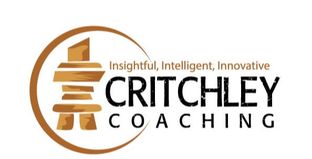
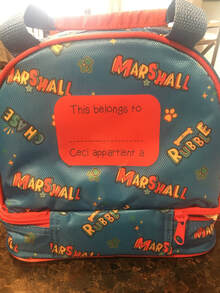
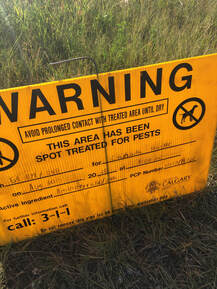
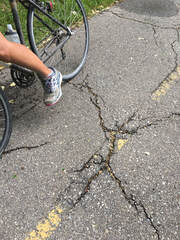

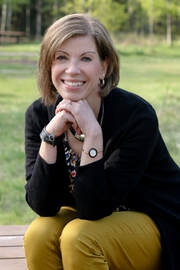
 RSS Feed
RSS Feed